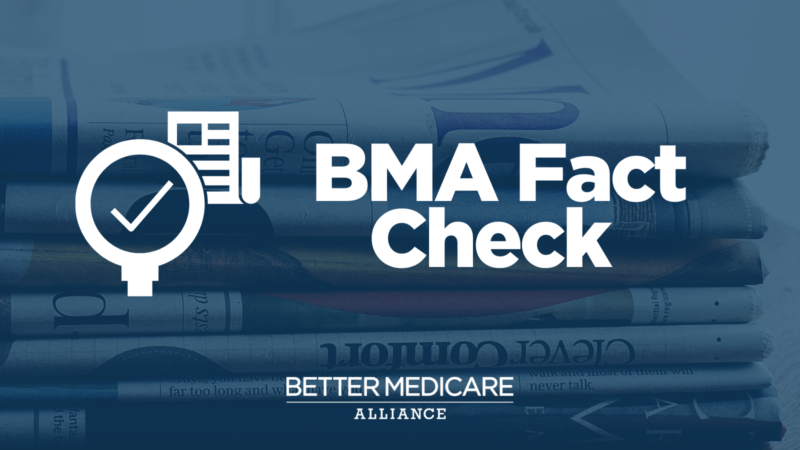BMA FACT CHECK: Medicare Advantage Is Medicare

With more than 30 million American seniors and individuals with disabilities now actively choosing Medicare Advantage, opponents of these affordable, high-quality coverage options are making false claims – and Better Medicare Alliance is setting the record straight.
FALSE CLAIM: Opponents of Medicare Advantage falsely claim that this vital part of the Medicare program “is not Medicare.”
FACT: Medicare Advantage, also known as Medicare Part C, is part of the Medicare program as established by law. “A Medicare Advantage Plan (like an HMO or PPO) is another Medicare health plan choice you may have as part of Medicare,” explains the U.S. Department of Health and Human Services (HHS).
In other words, Medicare Advantage is Medicare. And Medicare Advantage is the choice of nearly half of all Medicare beneficiaries nationwide because it provides substantial cost savings, valuable supplemental benefits and superior outcomes to beneficiaries – all while advancing important goals around health equity.
Here are some more facts about Medicare Advantage:
- Medicare Advantage provides beneficiaries with an average cost savings of nearly $2,000 per year versus Fee-for-Service (FFS) Medicare. And while the costs of food, gas and other household expenses have gone up, Medicare Advantage premiums for 2023 have gone down in cost yet again, falling nearly 8 percent from 2022.
- Medicare Advantage plans offer valuable supplemental benefits that aren’t included with FFS Medicare and are shown to improve health outcomes, ranging from routine dental and eye care to meal delivery, help with transportation to appointments, and in-home services.
- Research shows better health outcomes for Medicare Advantage beneficiaries. For example, a study by Avalere Health found that Medicare Advantage beneficiaries with hypertension, hyperlipidemia, and diabetes have nearly 29% fewer potentially avoidable hospitalizations, 41% fewer avoidable acute hospitalizations, and 18% fewer avoidable chronic hospitalizations than FFS Medicare beneficiaries.
- Medicare Advantage earns a 94 percent satisfaction rate among beneficiaries.
- Medicare Advantage has consistently demonstrated its responsible stewardship of Medicare dollars, including lower per-beneficiary government spending and a lower net improper payment rate than FFS Medicare.
- Medicare Advantage serves a lower-income, more diverse, and more clinically complex population than FFS.
- Data analysis shows that 52.7 percent of Medicare Advantage beneficiaries live below 200 percent of the Federal Poverty Level, compared to 38.3 percent of FFS enrollees.
- Medicare Advantage beneficiaries are more likely to self-report having three or more chronic conditions, they are more likely to be food insecure, and are more likely to self-report diagnoses of conditions such as diabetes, COPD, congestive heart failure, or dementia.
- Enrollment in Medicare Advantage among beneficiaries who are dually-eligible for Medicaid increased by 125 percent from 2013 to 2019 alone, even as it decreased by 5 percent in FFS.
- Medicare Advantage serves “a higher proportion of patients with clinical and social risk factors shown to affect health outcomes and cost than FFS,” according to research by Avalere Health.
###
